(12/11)
Cut by means of CNC and a home-made drag knife holder. Artwork and gcode was made in CamBam in the usual way, to celebrate the traditional festive themes:
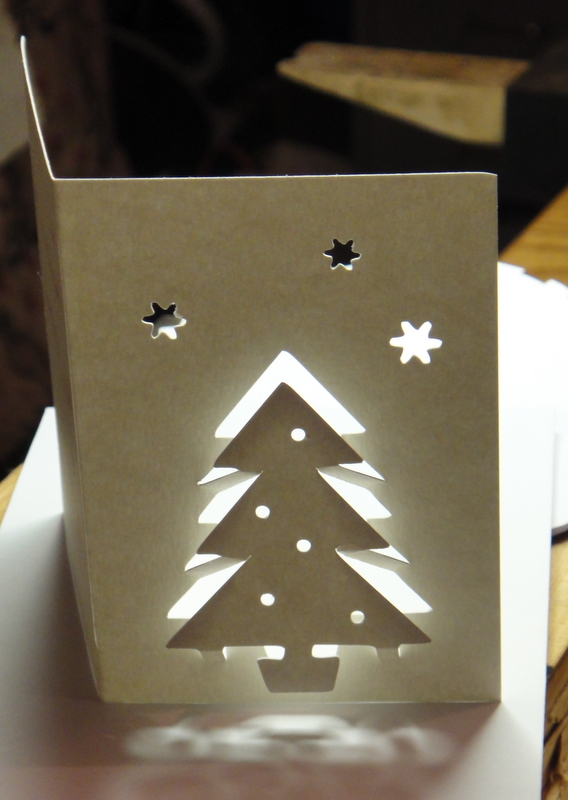

The drag knife blade and holder came from Hobbycraft. Better blades can be got from ebay (look for vinyl cutter blades), but we were in a rush and needed something we could find in a shop.

Here's the blade:
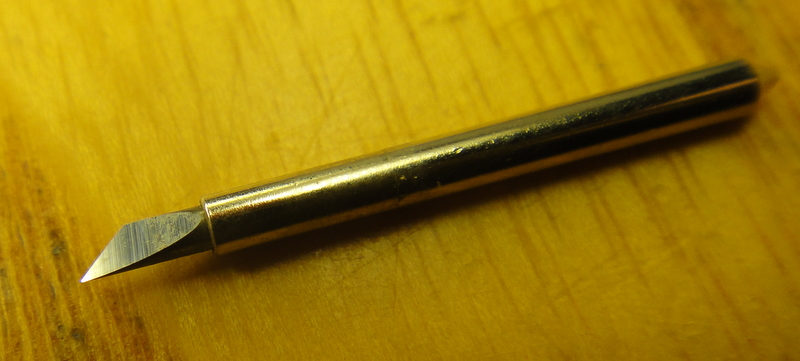
And this is how it is meant to look in the holder, which we didn't use in the end:
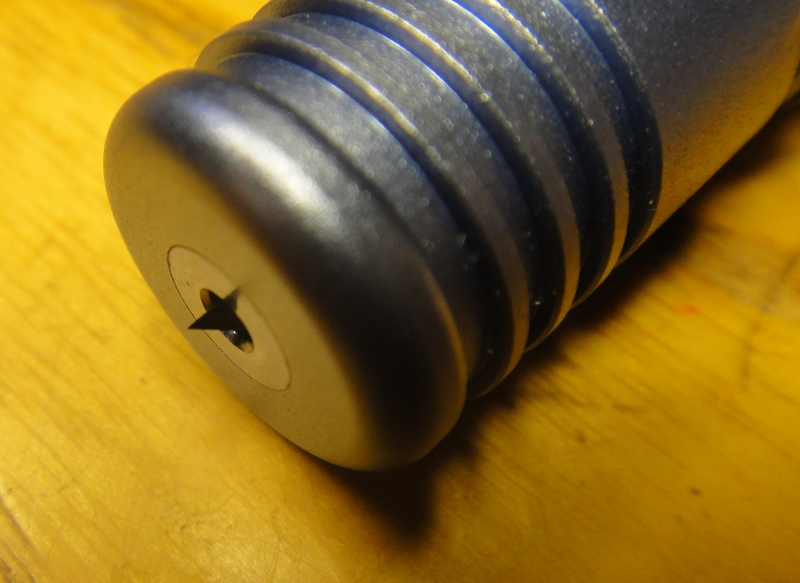
Instead, I made a holder which would fit into a standard collet. A bit of brass was turned down to 6mm in the lathe, and drilled in one end to hold a tiny magnet, which stops the knife falling out. The magnet has to be significantly smaller in diameter than the brass, otherwise the steel of the collet sucks up all the field lines and the knife falls out.

Magnet epoxied in:

The other end was drilled to hold the blade. The point on the top of the blade's shaft provides the thrust bearing, running on the brass at the end of the hole, so the blade spins quite freely.

My first experiments used MDF under the paper, but that wore out the blade point, so I moved to using a plastic cutting mat which was much more effective. The paper is held down by a couple of strips of masking tape, and is aligned by a 'jig' consisting of a couple of bits of tape which have been cut by the machine along the x and y axes. I thought I might need to hold the paper down with some kind of peelable glue, but in the end paperholding was not a problem.
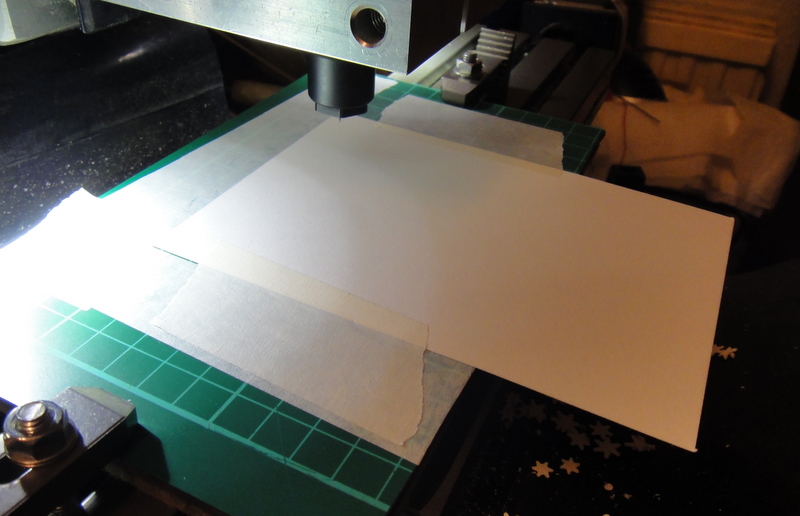
The brass holder goes in a 6mm collet in the Taig's spindle. It is important to turn off the motor when using the drag knife!

Hello World:
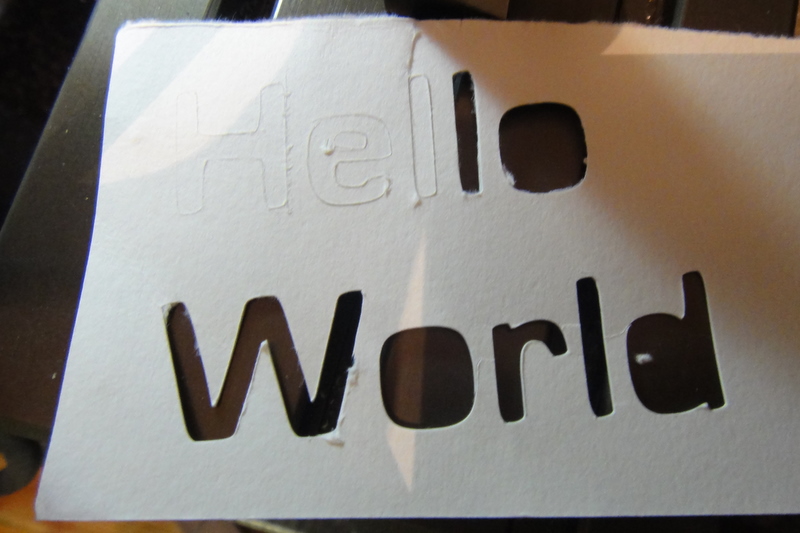
I found one problem which had to be resolved by trickery in the artwork. Although the blade steers very well in most circumstances, it goes wrong when it is facing exactly the wrong way at the start of a cut. Then, it fails to turn (because the 'keel' effect is stronger than the self-steering effect) and so tries to cut backwards. That snags the paper and ruins the part.
The solution is to start every cut with an extra 1mm or 0.5mm section at 90 degrees to the initial direction of the cut. That isn't long enough for a snag to cause a problem, and the self-steering effect takes over at the corner.
I suspect I could automate this with a clever use of lead-ins in CamBam. But I didn't.
 Home | Artefacts| CNC
Home | Artefacts| CNC